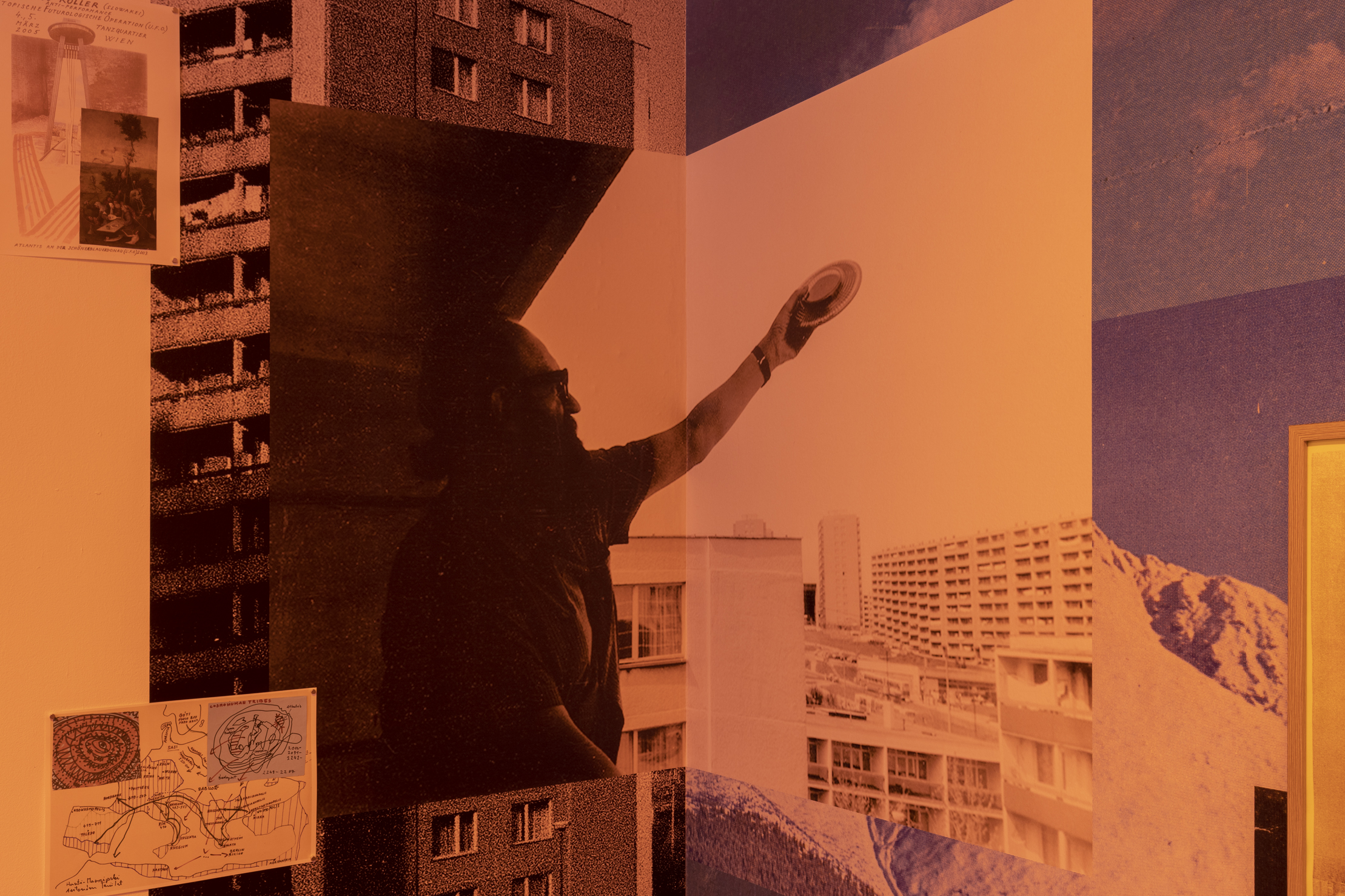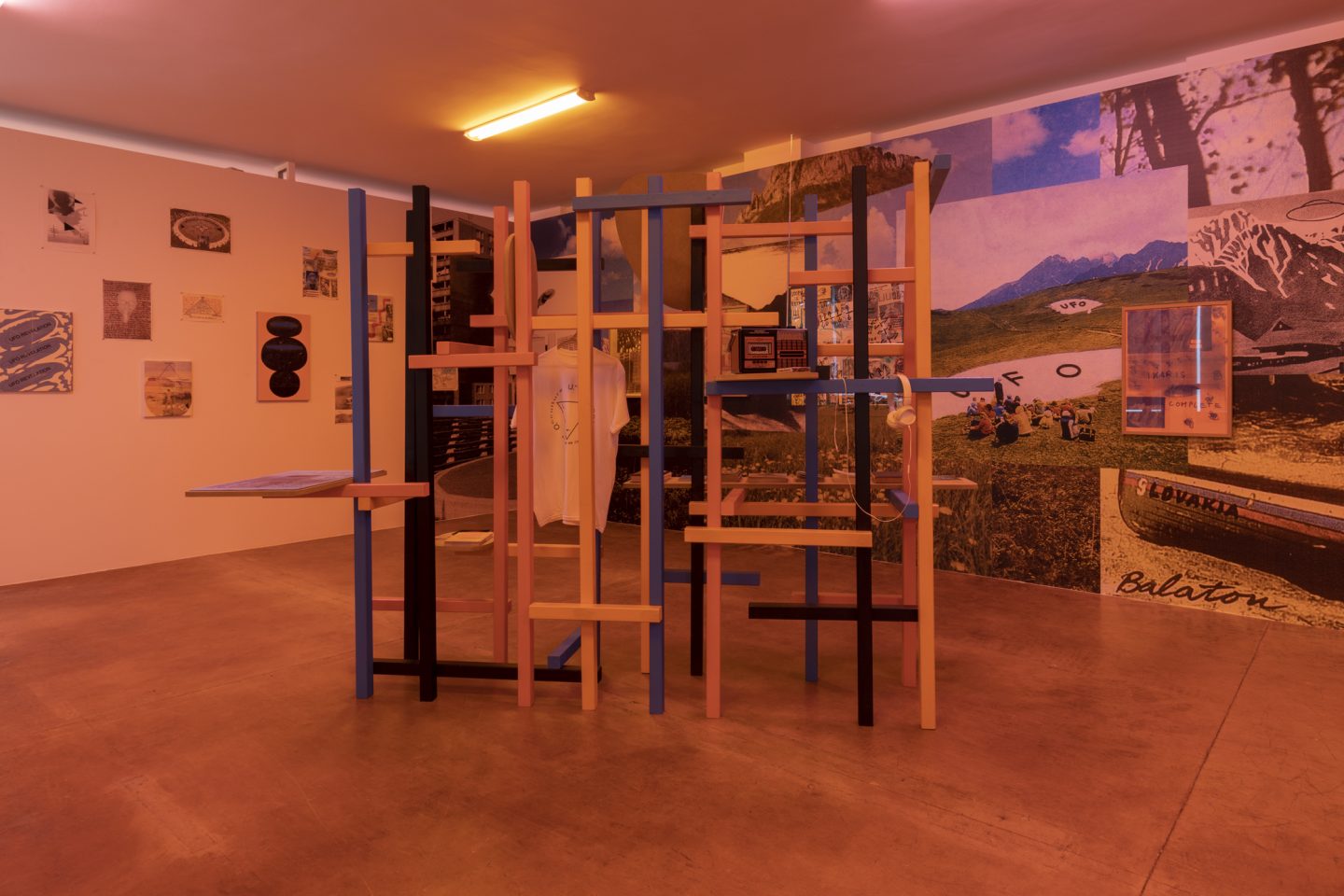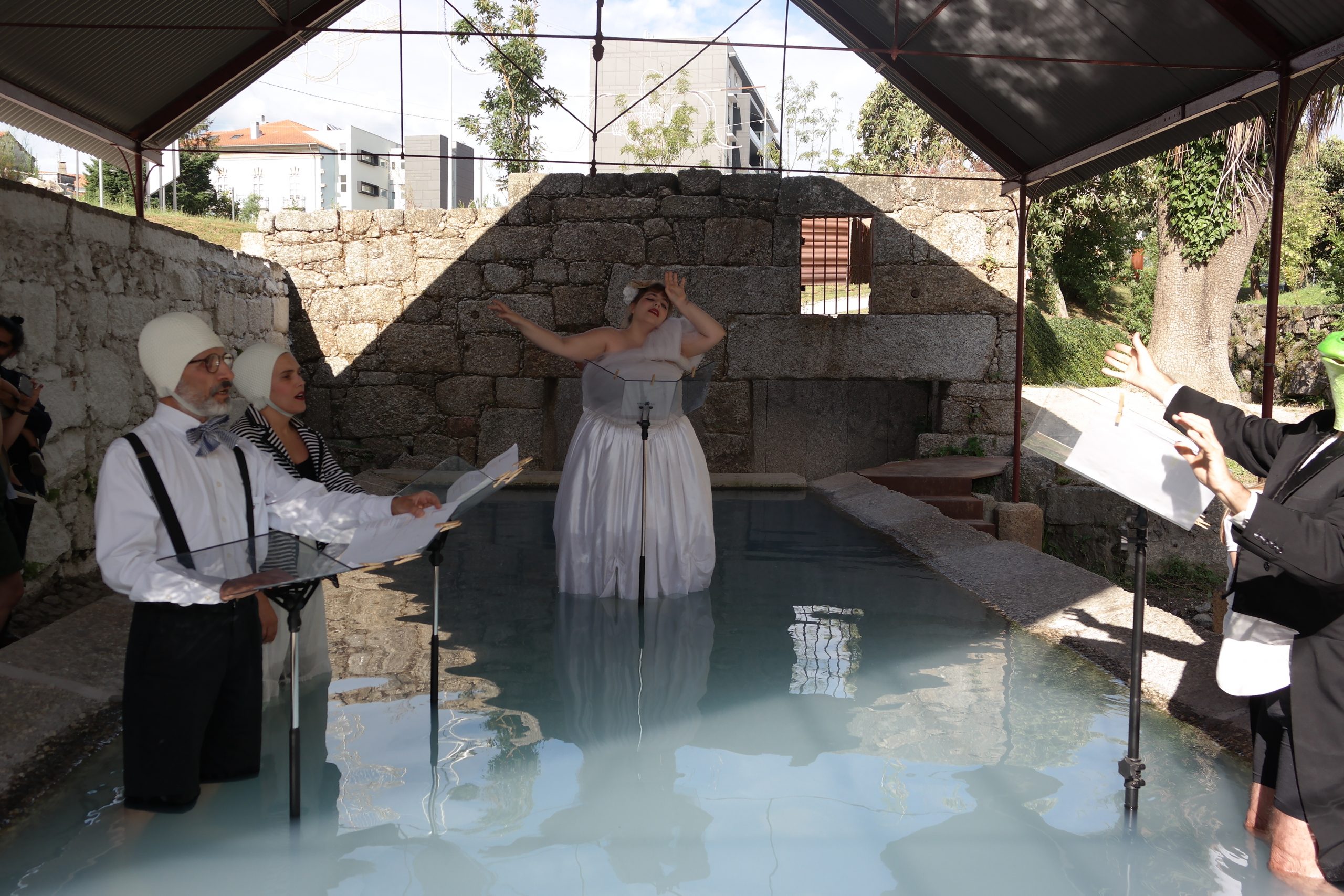The solo exhibition Unforeseen Forces of Occulture (U.F.O.), by Technologie und das Unheimliche (T+U), at the Július Koller Society’s Bratislava space at Nová Cvernovka, was a complex structure. It consisted of many layers – archival material and artworks of Július Koller himself, collages and interventions by T+U, artworks and editions by individual T+U members (Mark Fridvalszki, Zsolt Miklósvölgyi, and Márió Z. Nemes), as well as ready-made objects, display furniture and sculptural elements, murals and ephemeral ingredients such as light and sound. All of the new work and appropriations of Koller’s materials formed a very coherent whole, underlining a quite uncanny affinity between the archive and the contemporary practice of T+U. An oversized image of Koller holding up a UFO against a backdrop of socialist housing encapsulated the most important topics of the exhibition – tension between different places imagined, alternative histories, hopes for a better world and the failure of both the socialist state and late capitalism.
Saucer, a piece by Mark Fridvalszki, was constructed from two overlayed ashtrays from the former GDR, and ping-pong balls. It looked like a variant of Koller’s UFO. To my mind, the piece, located centrally on exhibition shelving, works as a counterpoint or an axis to the rest of the exhibition. It’s an object from civilization past, from a country which doesn’t exist, it holds the past and Koller’s practice within it and travels through dimensions, through space and time. It seems to have travelled from the Atlantis of the GDR, Czechoslovakia, Socialism. From this perspective, Atlantis – as research topic and metaphor of such importance for Koller – turns out to be a key to looking at the past. T+U exhibits artefacts from Atlantis and the presentation is, at the same time, a research report and an archeological site itself.
Another piece from the exhibition that seems like an artefact from another world is the sound piece by Márió Z. Nemes, Cosmohuman Antitransmission. This could be played from a cassette on a small recorder and filled the room with a soundscape. Besides a collection of books, this was only piece that was interactive, it invited viewers to decide when to start, for how long and how loud to play the tape; moreover, it invited us to participate in an activity that invokes in most of us a kind of nostalgia. Specifically a nostalgia for technology of times gone, from Atlantis. As such, the images from Koller’s archive showing the Ganek Gallery in the High Tatra mountains seemed not like fictional projects, a visionary collage, but rather to be archeological documentation of a real, once existing place.
The exhibition was bathed in orange light, as if illuminated by a different sun. The T+U works and the whole installation reflected this light and the radiance inspired us to consider what kind of past emerges from the cracks between life, art, science and archeology. The abundance of images, archival materials from past and present, from East and West, from Balaton and Tatra, formed a very contemporary experience in which a constant flow of images makes it impossible to grasp any singular meaning. Instead we see a collection to scroll, and the deeper we go, the more the possibilities to differentiate between the real and the unreal fade away.




